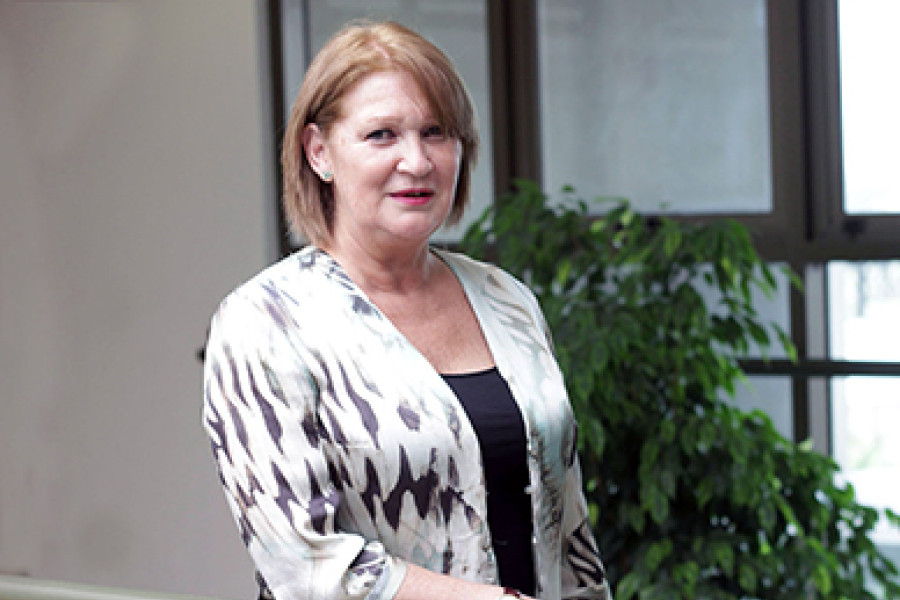Dr Astrid Oddershede, researcher at the Department of Industrial Engineering of Universidad de Santiago, studied how these technologies work in public and private hospitals and the importance they have for the different agents involved. “We found that the use of ICT is essential for clinical service staff, that is to say, doctors and nurses, as most of them felt that quick and efficient information helped them to have a best performance at work,” she said.
By using the multi-criteria analysis method, Dr Astrid Oddershede, professor at the Department of Industrial Engineering of Universidad de Santiago, studied how Information and Communication Technologies (ICT) were appraised and to what extent they were required by the users of the health system in Chile.In recent years ICT have become an almost unavoidable need for everyone. Most services have adopted and incorporated them to their operation procedures, like the health system, for example, that evolved from paper forms into digital interconnected systems that allow capturing data. However, it is not clear if this change has been reflected in a better service to users. This was the process that Dr Oddershede evaluated.By studying the factors that affect the quality of the Chilean health service, Dr Oddershede, an expert in multi-criteria analysis, found that information technologies are considered an important issue in the quality of service; however, there was little scientific literature about the needs and requirements of people who interact with them. This information is helpful for these centres’ managers to better allocate the budget they have, because with this data they can optimize their operations.With the support of the Scientific and Technological Research Department (Dicyt) of Universidad de Santiago, professor Oddershede studied how these technologies worked in public and private hospitals and their importance for the different users involved. The results were published in the International Journal of Computers Communications & Control under the title “Decision Model for Assessing Healthcare ICT Support Implications: User Perception.”“We detected four types of users: clinical service staff, patients, administrative staff and researchers. Based on different techniques, we found out that the use of ICT was essential for clinical service staff, that is to say, doctors and nurses, as most of them felt that quick and efficient information helped them to have a best performance at work,” she said. One of the features that users considered critical was the creation, permanent availability and use of data bases, the most important application to efficiently assist patients. However, it was possible to see in practice that Internet and e-mail were the tools that the system users used the most, what reflected the difference between what users want and what happens in practice.“Little delay, better access, more reliability and efficiency were the most required features. Then, it was necessary to find what features were essential to develop each task. This allowed us to establish priorities to evaluate the quality of the network available at that moment,” professor Oddershede said.“Most of the time, these institutions make budget decisions without having enough information about the real needs of their users. This is why these studies are essential, as they allow a better allocation of resources and the optimization of the decision making process on future budgets,” she said.Multi-criteria analysis based research as a mechanism of agreementWhen there are many agents involved in a problem, it is difficult to design a solution, because the idea is not to damage anyone. To find a solution, it would be ideal to have a map of the situation, something similar to what the multi-criteria analysis model seeks. Its purpose is to determine, based on a scientific model, the perception of most of the agents involved and then compare it to what happens in reality. This analysis involves a wide variety of methods which are mainly characterized by their ability to handle decision making problems in contexts with multiple goals, criteria, agents and choices.According to Dr Oddershede, the greatest value of using this methodology is what you achieve with people. “When making decisions, the different agents many times come into conflict with each other due to the different knowledge, experience and expectations they have. This methodology allows comparing the different situations and helps to explain the problems so that they can find a solution together,” she said.In recognition of the successful use of this method, professor Oddershede and a team of students at the Master’s Program were awarded a prize in 2013. They received an award to the best published work at the International Symposium on the Analytic Hierarchy Process (ISAHP) held in Malaysia, regarding a multi-criteria analysis conducted in a company that wanted to automate some of its operations.“When an institution makes this type of decision, problems and reservations are frequent; besides, many agents must interact with each other. Considering the multi-criteria analysis model is a consensual way of approaching the problem, without prioritizing one area over the other,” Dr Oddershede stressed.Translated by Marcela Contreras


